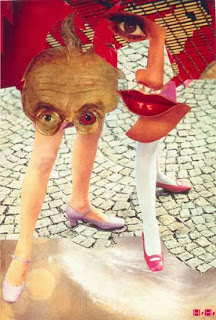As the textbook mentioned that "the first wave of poster culture emerged from the late 1960's hippie subculture centered in the Haight-Ashbury section of San Francisco" (448), nowadays we can still see a lot of psychedelic and colorful wall-arts, posters and buildings in that area. It's one of my favorite place to go anytime.
Here is pictures of Haight-Ashbury street which I take, as you can see there still exists a traits of post modern art culture in the atmosphere. Especially, the second image is a typical example of psychedelic concept of wall-art, which visually makes me feel so high. Usually psychedelic art are inspired by such as drugs, music especially rock and reggae, that is to say hippie cultures, and are created with vivid colors thus those artworks are impressive to our eyes. You can see a lot of unique shops with unique yet psychedelic designs.
There is a museum called Haight-Ashbury museum of psychedelic art and history (http://www.haightashburymuseum.org/) and you can still see a lot of artworks of old and latest psychedelic posters. Also there is a NPO called "Haight Ashbury Street Fair" (http://www.haightashburystreetfair.org/), they are dedicated to celebrating the cultural history of Haight and Ashbury and artists sells their posters, artworks which are mostly related to music and hippie culture.
It's such a pleasure that those art traits still exist and popular among people. I hope kind of people's attempt and eager to art continues to go on, and at the same time it helps them to create a new genre of arts.









